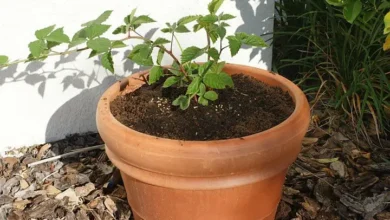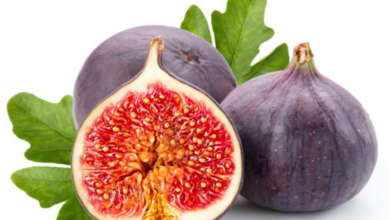Blueberry Bushes Leaves Turning Brown: Causes, Fix & Prevention

Many gardeners enjoy growing blueberry bushes because they offer tasty and healthy fruit. Usually, they are not hard to take care of. But sometimes, the leaves on blueberry bushes start to turn brown. There are several reasons why this happens. In this guide, we will look at why blueberry bush leaves might turn brown and share tips on how to make them green again.
Table of Contents
- What Causes Brown Leaves on Blueberry Bushes?
- Steps to Green Up Brown Leaves on Blueberry Bushes
- 1. Find Out Why It’s Happening
- 2. Deal With the Issue
- 3. Trim and Clean Up
- 4. Watch and Prevent New Issues
- How to Stop Blueberry Bush Leaves From Turning Brown
- 1. Prepare the Soil Right
- 2. Give Them Enough Water
- 3. Fertilize Properly
- 4. Keep Pests and Diseases in Check
- 5. Trim Regularly
- Wrapping Up
What Causes Brown Leaves on Blueberry Bushes?
Brown leaves on blueberry bushes can come from different problems, and they can affect how well the bushes grow. Lack of water is one of the main reasons leaves might turn brown. Blueberry bushes need enough water to stay healthy. If the soil gets too dry, the leaves might start to turn brown and could drop off.
Not having enough nutrients like nitrogen, phosphorus, and potassium can also make blueberry bush leaves turn brown. These nutrients are important for the bush’s growth and health. If they’re missing from the soil, the plants might not grow right, and their leaves could turn brown.
Bugs and sickness can cause brown leaves, too. Critters like spider mites, aphids, and scale insects might eat the leaves, making them turn brown and fall off. Bushes can also get sick with things like stem blight or mummy berry disease, which can make the leaves brown.
It’s super important to figure out why the leaves are brown so that you can treat your blueberry bushes the right way and keep them from having more problems.
Steps to Green Up Brown Leaves on Blueberry Bushes
1. Find Out Why It’s Happening
The first thing to do if your blueberry bushes have brown leaves is to figure out the reason. It could be because they’re thirsty, hungry, or under attack by bugs or diseases. Look closely at your plant to see what might be going on.
2. Deal With the Issue
When you know why the leaves are turning brown, you can start fixing the problem.
Try these fixes:
- Water: If the issue is that there’s not enough water, start by watering your bushes more often. You want to give them a steady supply of moisture. A soaker hose or a drip irrigation system can be great for providing slow, deep watering, which is really helpful.
- Nutrients: If the bushes lack nutrients, you should use a good fertilizer made for blueberry bushes, which has the right balance of nitrogen, phosphorus, and potassium. You can also put things like compost or manure around the bushes to add more nutrients to the soil.
- Bugs and Diseases: If bugs or diseases are the problem, find a suitable bug killer or disease treatment to use on your bushes. Always read the instructions and apply them when the weather is dry. Don’t forget to remove any sick leaves or branches to keep the problem from spreading.
3. Trim and Clean Up
If many leaves have turned brown, you might need to cut away the bad parts. Use clean, sharp cutters to snip off dead or dying branches.
Also, pick up any fallen leaves or trash around the bushes because these could hide bugs or germs.
4. Watch and Prevent New Issues
After you take care of the brown leaves, keep a close watch on your blueberry bushes. Look out for any new signs of problems, make sure they have enough water, and give them food when they need it. You could also use netting to keep birds away or choose types of blueberries that don’t get sick as easily.
Fixing brown leaves means finding out what’s wrong and dealing with it. With the right care, you can get your bushes healthy again and have a great harvest of blueberries.
How to Stop Blueberry Bush Leaves From Turning Brown
It’s usually easier to prevent brown leaves than to fix them after they’ve shown up.
Here are ways you can stop brown leaves from happening in the first place:
1. Prepare the Soil Right
Before you put in blueberry bushes, make sure the soil drains well and has a pH between 4.5 and 5.5. Blueberries like sour soil, so you might need to add compost or other stuff to keep the soil acidic.
2. Give Them Enough Water
Blueberry bushes do best when they get watered deeply and regularly, especially when it’s hot and dry outside. A drip irrigation system or soaker hose is a good way to get water right to the roots and stop water waste.
3. Fertilize Properly
Fertilizing helps blueberry bushes grow well. Use a fertilizer that’s made for blueberries and follow the directions. But be careful not to give them too much as this can hurt the plants.
4. Keep Pests and Diseases in Check
Keep an eye on your bushes for signs of bugs or sickness. If you spot trouble, get the proper treatment and use it right. Cut away and throw out any parts of the plant that are sick to keep it from spreading.
5. Trim Regularly
Pruning helps keep your bushes in good shape. Clip off any parts that are dead or hurt. Also, cut away any small shoots or branches that don’t look strong, which helps the bush stay healthy and grow well.
By doing these things—taking care of the soil, watering, feeding, fighting bugs and diseases, and pruning—you can keep your bushes from getting brown leaves and ensure they bear lots of blueberries year after year.
Wrapping Up
Brown leaves on blueberry bushes can happen for many reasons, such as not enough water, missing nutrients, or problems with bugs and disease. To make them better, you need to figure out what’s causing the issue and take the right steps to fix it. You should also clean up any bad leaves or branches.
But it’s better to keep brown leaves from happening to begin with. You can do this by taking good care of the soil, watering properly, fertilizing on time, keeping an eye out for trouble, and trimming the bushes.
If you take care of your blueberry bushes the right way, you can avoid problems with brown leaves and look forward to lots of fresh, homegrown blueberries to enjoy.







